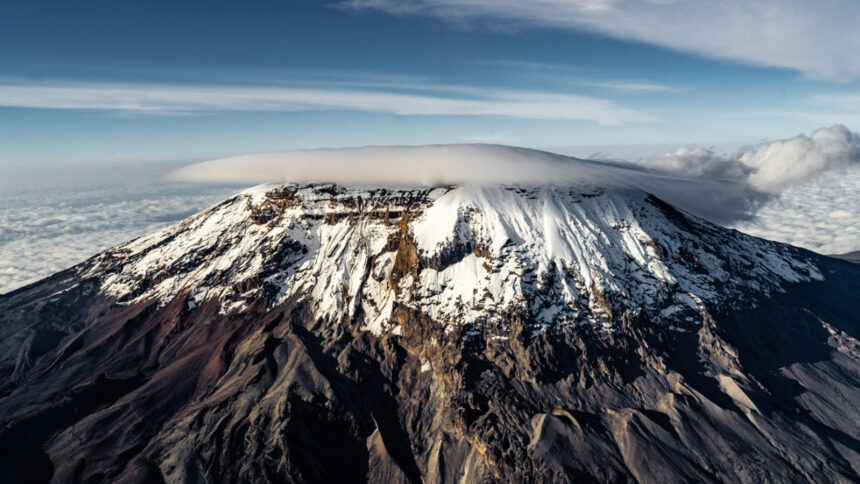East Africa is home to some of the most breathtaking mountains in the world, making it a top destination for adventure seekers and nature lovers. From towering snow capped peaks to volcanic ranges surrounded by rich wildlife, the region offers unforgettable climbing experiences for both seasoned mountaineers and beginners. Climbing mountains in East Africa is not just about the thrill of reaching the summit but also about discovering diverse landscapes, unique cultures, and incredible biodiversity along the way.
The mountains in this region attract travelers from all over the world who are eager to explore destinations such as Mount Kilimanjaro in Tanzania, Mount Kenya in Kenya, and the Rwenzori Mountains on the Uganda and Democratic Republic of Congo border. Each of these peaks provides a different kind of challenge and beauty. Kilimanjaro, the tallest mountain in Africa, is famous for its iconic glaciers and scenic trekking routes. Mount Kenya captivates climbers with its rugged terrain and alpine scenery, while the Rwenzori Mountains, often called the Mountains of the Moon, are known for their mystical landscapes and rare plant species.
Other notable climbs include Mount Meru, Mount Elgon, and the Virunga Volcanoes, each offering breathtaking views and thrilling adventures. Whether you seek challenging ascents or scenic treks, the top mountains to climb in East Africa promise a life changing journey filled with natural wonders, cultural encounters, and a true taste of adventure.
Top Ten Mountains To Climb In East Africa
10. Mount Longido, Tanzania
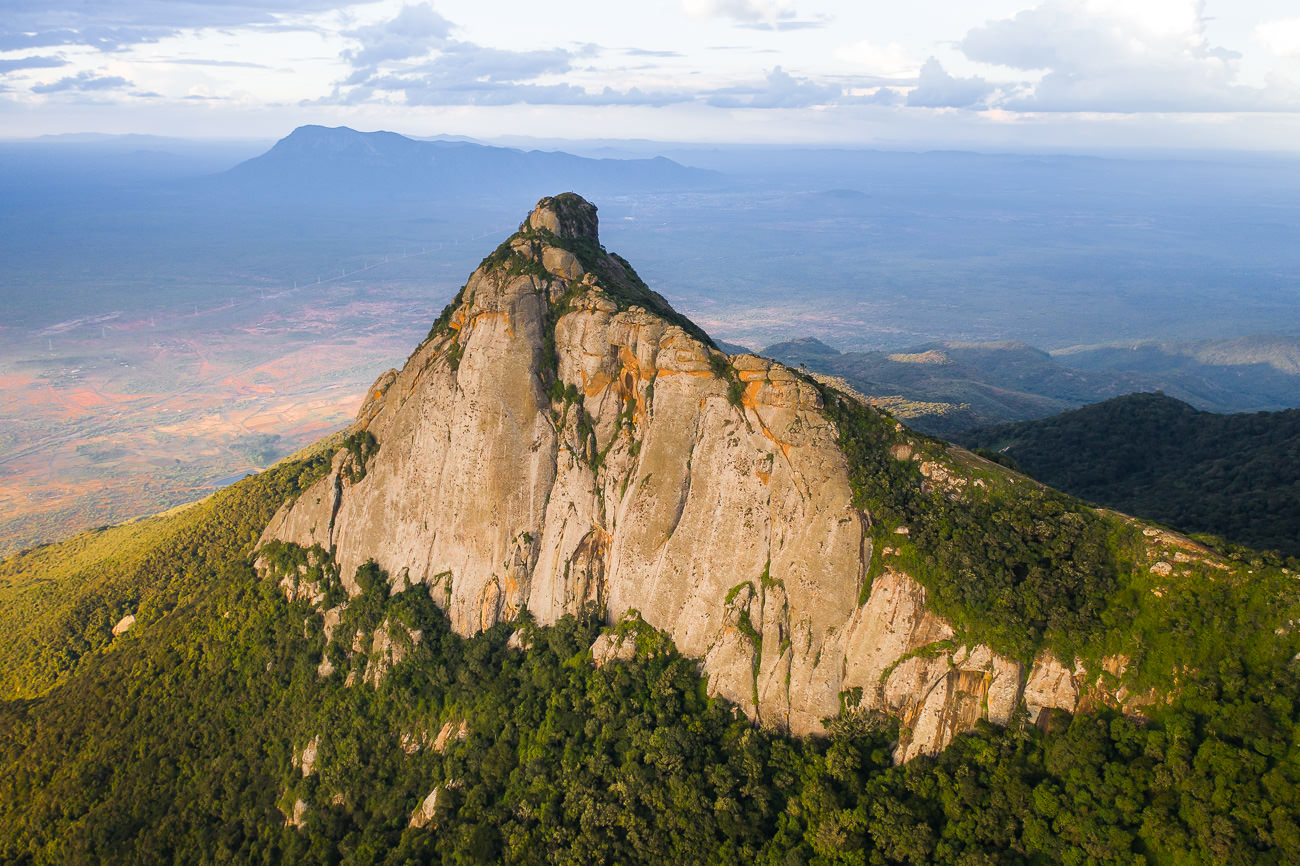
Mount Longido sits north of Arusha and rises above the plains as an accessible and scenic climb for hikers looking to warm up for bigger East Africa mountains. The route moves through acacia woodlands and scrubby slopes, giving way to open ridgelines with broad views over the Maasai grazing lands and distant volcanic shoulders. Weather changes quickly here, so walkers pass through cool mornings and bright afternoons that reveal a tapestry of rock outcrops and intermittent wildlife. The summit ridge rewards with panoramas in every direction including a clear sight line toward Kilimanjaro on good days.
Local guides add cultural meaning to the trek by sharing Maasai stories and explaining traditional land uses. The ground underfoot is mostly firm rock and compacted soil so the hike is technical in places but manageable for hikers with a moderate fitness level. Campsites on the upper slopes provide quiet vantage points for sunrise photography and early morning light on the horizon. For anyone planning a series of climbs in northern Tanzania, Longido is a practical and satisfying option that combines training value with authentic rural scenery and minimal crowds.
9. Mount Hanang, Tanzania
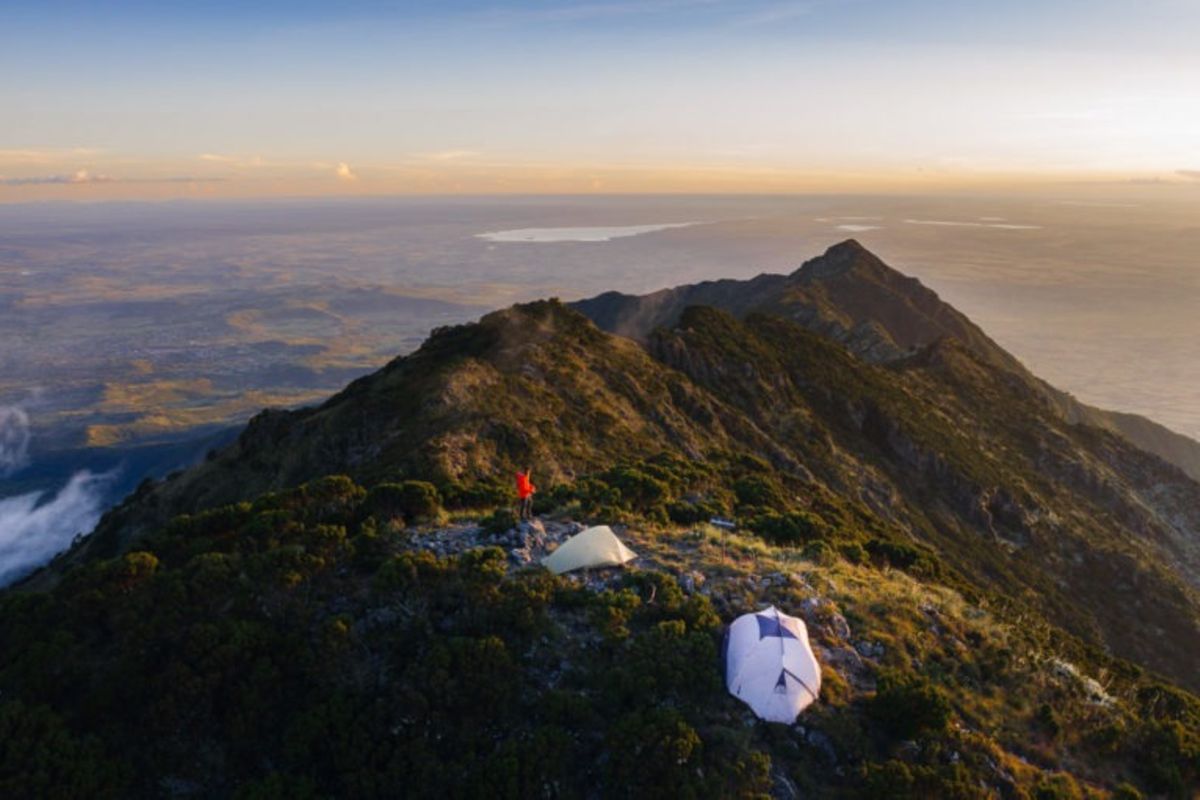
Dominating the Manyara region, Mount Hanang is a steep and solitary peak that gives hikers a tough but rewarding day climb or an overnight trekking option. Approaches move from farmland and small rural settlements into grassy slopes that become rockier as elevation rises. The trail switches between open ridge sections and sheltered gullies where birds and small mammals are often seen. Climbers experience an evolving landscape that highlights Tanzania beyond its famous parks a reminder of highland farming life and remote mountain character.
Summit conditions are exposed and winds can make the final push feel raw and elemental, yet the views from the top reach across broad plains and toward neighbouring volcanic ranges. Because the mountain receives far fewer visitors than major peaks, the sense of solitude is strong and the natural soundscape of wind and distant calls holds sway. This is a climb that rewards steady pacing and respect for weather windows and it works well for trekkers wanting altitude practice without long logistics.
8. Mount Satima, Kenya
At the crown of the Aberdare Range, Mount Satima rises inside a wild and mist swept highland that feels ancient and dramatic. Trails pass through dense cloud forest where moss hangs heavy from branches and the air tastes cool and green. Above the tree line the landscape shifts to expansive moorland and jagged crags known locally as the Dragon Teeth. Those rock formations create a sculpted skyline and invite photography that captures both scale and geological drama. The terrain here is volcanic in origin and supports specialist highland flora including giant lobelias and unique heath species.
Hikes can be arranged to traverse remote ridgelines and to visit glacially carved valleys. Wildlife is present though often shy with forest antelope and bird species that favour the highlands. Satima is less trafficked than other Kenyan summits which preserves a strong sense of wilderness and offers rich opportunities for longer trekking itineraries that link remote peaks and valleys across the Aberdares.
7. Mount Gahinga, Virunga range on the Uganda Rwanda border
![]()
Mount Gahinga is a gentle volcano within the Virunga chain and it offers a surprisingly varied climb for those who seek wildlife encounters alongside mountain scenery. The ascent moves through bamboo forest that opens into lush afro montane meadows and a saddle rim that surrounds a shallow crater. That summit area is notable for its marshy basin dotted with lobelias and endemic plant types that give the peak a fragile and unusual look. Primates inhabit the slopes so sightings of golden monkeys are possible on the trail making the climb part botanical journey and part wildlife walk.
The hike is relatively short compared with the region’s higher volcanoes yet the atmosphere feels remote and verdant. Local conservation efforts mean visitors can support community programmes and park management by arranging guided treks, which helps maintain trails and wildlife protection. For a climb that blends ease with natural richness, Gahinga provides a calming counterpoint to more strenuous summits and a scenic window into the Virunga ecosystem.
6. Mount Sabinyo, at the meeting point of three countries
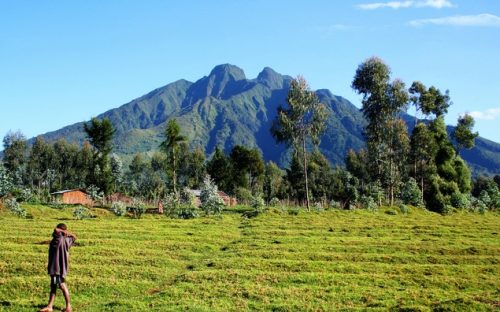
Sabinyo stands out because its jagged summit ridge marks the meeting point of Uganda, Rwanda and the Democratic Republic of Congo. The approach threads through bamboo forest and cliffed slopes that test balance and resolve as the route gains height. The upper reaches present steep scrambles and short ladder like sections where climbers must negotiate rock bands and exposed ground. Views from the higher terraces reveal a ring of Virunga volcanoes each with their own distinct silhouette and a pattern of crater lakes and volcanic cones that stitch the landscape together.
Because of the mountain’s geology the summit has a serrated feel which lends drama to both photographs and the experience of reaching the crest. Animal life and birdlife add interest on the way up and porter services are often available from nearby villages to help carry supplies. This mountain combines cultural fascination with physical challenge and rewards climbers who are prepared for varied trail conditions and for moments of true wilderness.
5. Mount Muhabura, Virunga chain borderlands

Muhabura rises like a perfect volcanic cone and it stands among the green ridges of the Virunga chain with a small crater at its crest. Routes climb through dense forest that opens into moorland and then to steep rocky slopes as elevation rises. On clear days the summit presents wide aligning views across volcanic peaks and distant lakes and forests. The plant life here is abundant and the trails show carefully maintained switchbacks that reflect steady visitor numbers from both Uganda and Rwanda.
Wildlife on the lower slopes includes forest mammals and an array of bird species, while local guides can enrich a climb by describing volcanic origins and community traditions. The ascent demands energy and some scrambling ability but it remains within reach for fit trekkers. For those who want to experience the Virunga mountains without technical climbing, Muhabura offers a focused and memorable climb with cultural resonance and spectacular summit vistas.
4. Mount Meru, Arusha National Park, Tanzania

Mount Meru stands inside Arusha National Park as a forested and volcanic giant that offers an immersive climbing experience with rich wildlife and dramatic scenery. Trails pass through habitats that host giraffe and buffalo in parklands below before moving into montane forest where colobus monkeys and birdlife become part of the climb. Beyond the trees the route gains a broad ridge and alpine terrain that demands steady pacing especially as altitude increases.
Summit day can be a long push but it frequently yields outstanding panoramas including a clear view of the great profile of Kilimanjaro on the horizon. The geological story of Meru is visible in the crater walls and in the ash cones that mark past eruptions, giving the mountain a layered sense of time. This climb is often used as acclimatisation for higher East Africa mountains because it combines technical interest with a high probability of wildlife sightings and varied ecosystems, from savannah like parkland to near polar conditions near the peak.
3. Mount Stanley and the Rwenzori Mountains, Mountains of the Moon
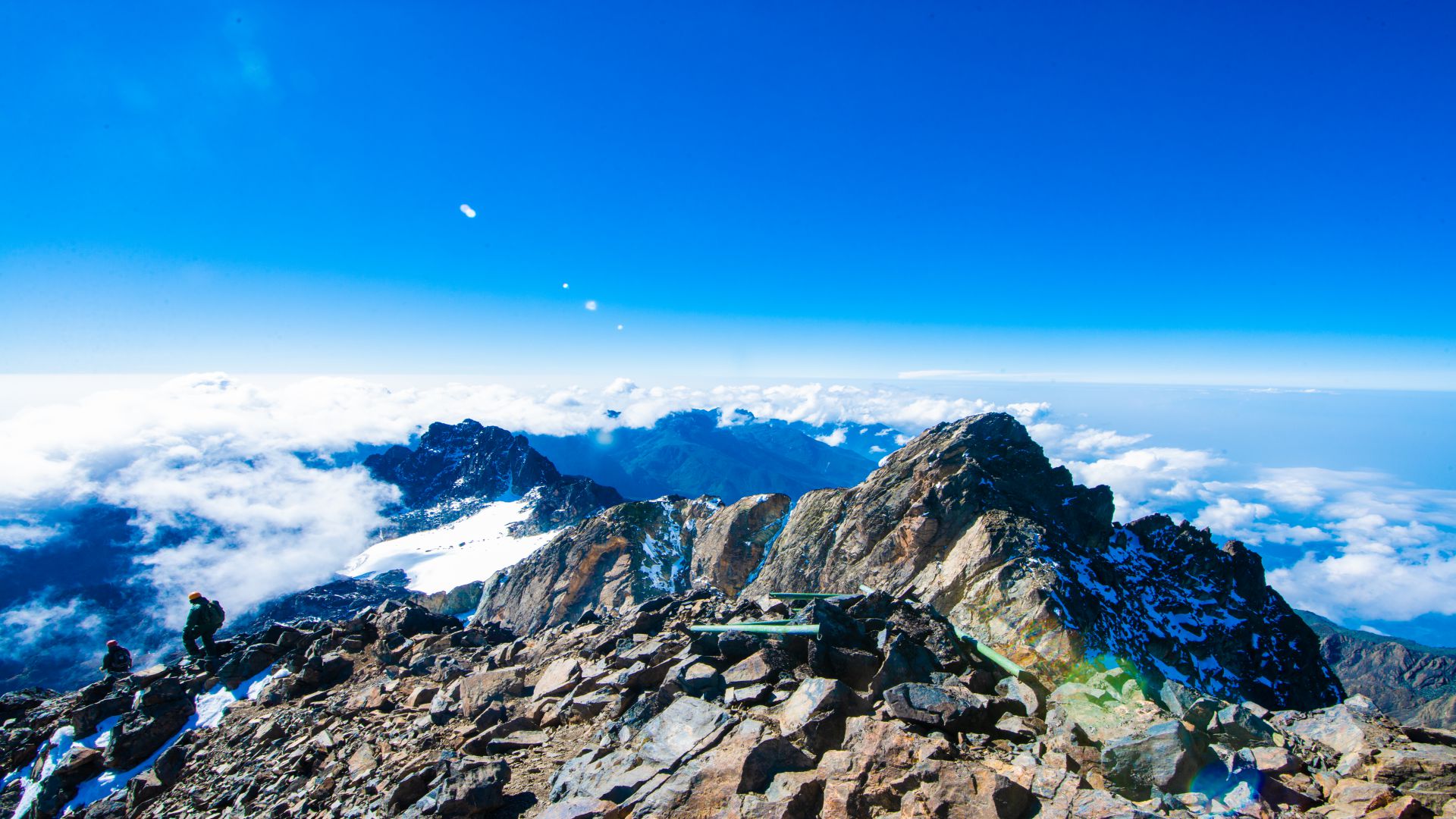
The Rwenzori range is quietly dramatic with huge glaciated massifs and peat bogs found almost on the equator. Mount Stanley contains the Margherita peak which rises above the clouds and is notable for its permanent ice fields in spite of equatorial latitude. Treks here are long and technical with river crossings boggy moorland and steep rock steps that require careful route finding and often equipment suited for snow and ice.
Mount Stanley’s landscapes feel otherworldly as giant lobelias and moss gardens create cloud forest scenery that shifts into alpine desert and then into ice. The slow rhythm of Rwenzori trekking focuses on acclimatisation and on negotiating remote and rugged ground that rewards with rare botanical sightings and a strong sense of solitude. This is not a quick trek but for those prepared to commit to many days on the trail the Rwenzori offers an intensely wild mountaineering experience unlike any other on the continent.
2. Mount Kenya, Kenya
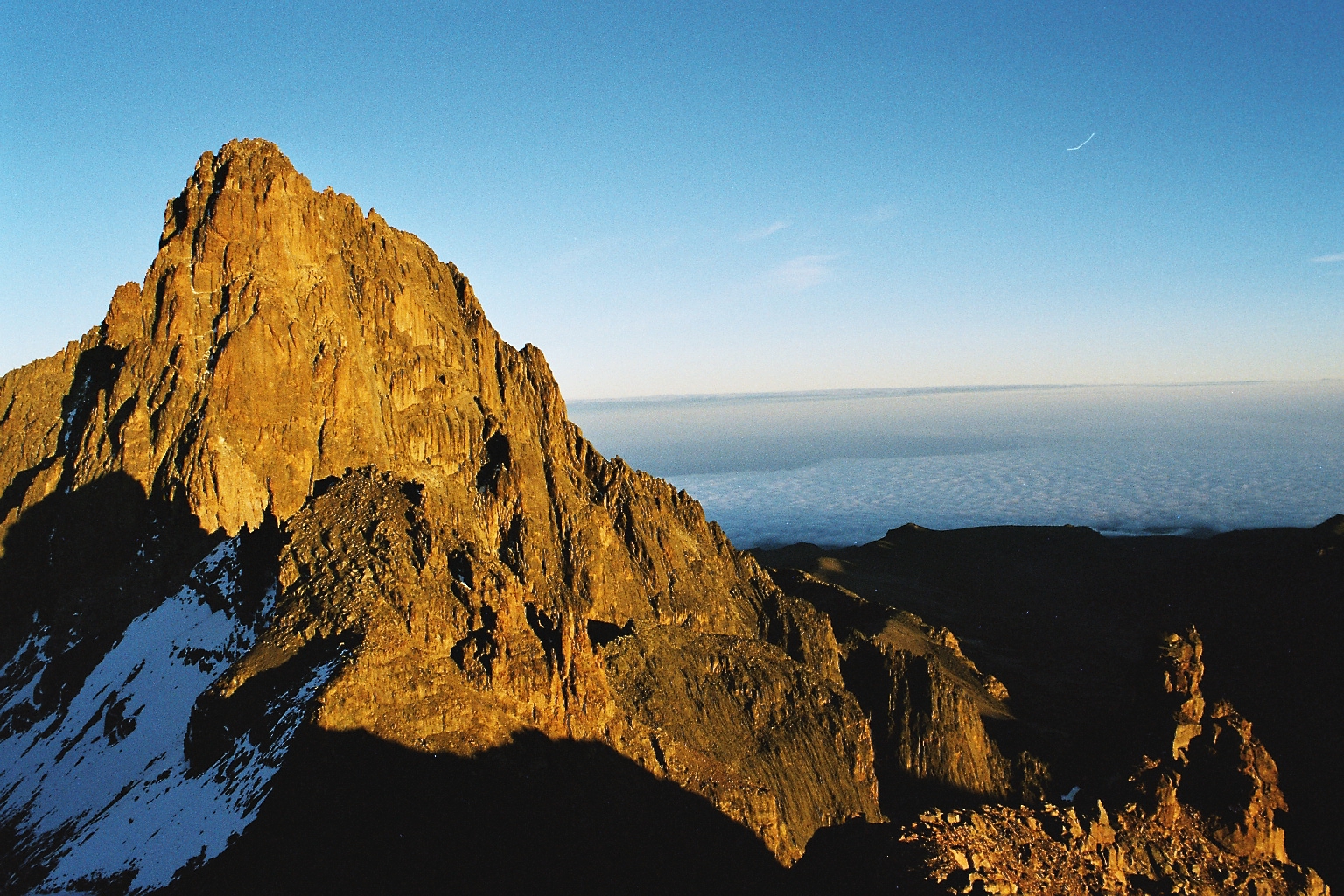
Mount Kenya rises abruptly from the central highlands and presents a varied profile from forested lower slopes to towering rock spires. The highest peaks are Batian and Nelion and those summits require technical rock climbing, while Point Lenana is the trekking summit accessed by a range of classic routes that move through bamboo belt heath and alpine moorland. The route choices include trails that offer dramatic waterfalls glacial valleys and lakes sheltered beneath cliff faces. Climbers pass through landscapes that change rapidly and that support endemic plants and specialist birdlife.
Many visitors to the mountain aim for a dawn summit at Lenana to watch light flood the craggy faces and to see broad views across Kenya’s highlands. Because of the mountain’s geological form and relative proximity to Nairobi logistics are straightforward yet the mountain retains a disciplined mountain culture with experienced guides and organised campsites. Mount Kenya rewards both technical mountaineers and trekkers seeking a high altitude adventure with clear mountain character and strong scenic contrast.
1. Mount Kilimanjaro, Tanzania
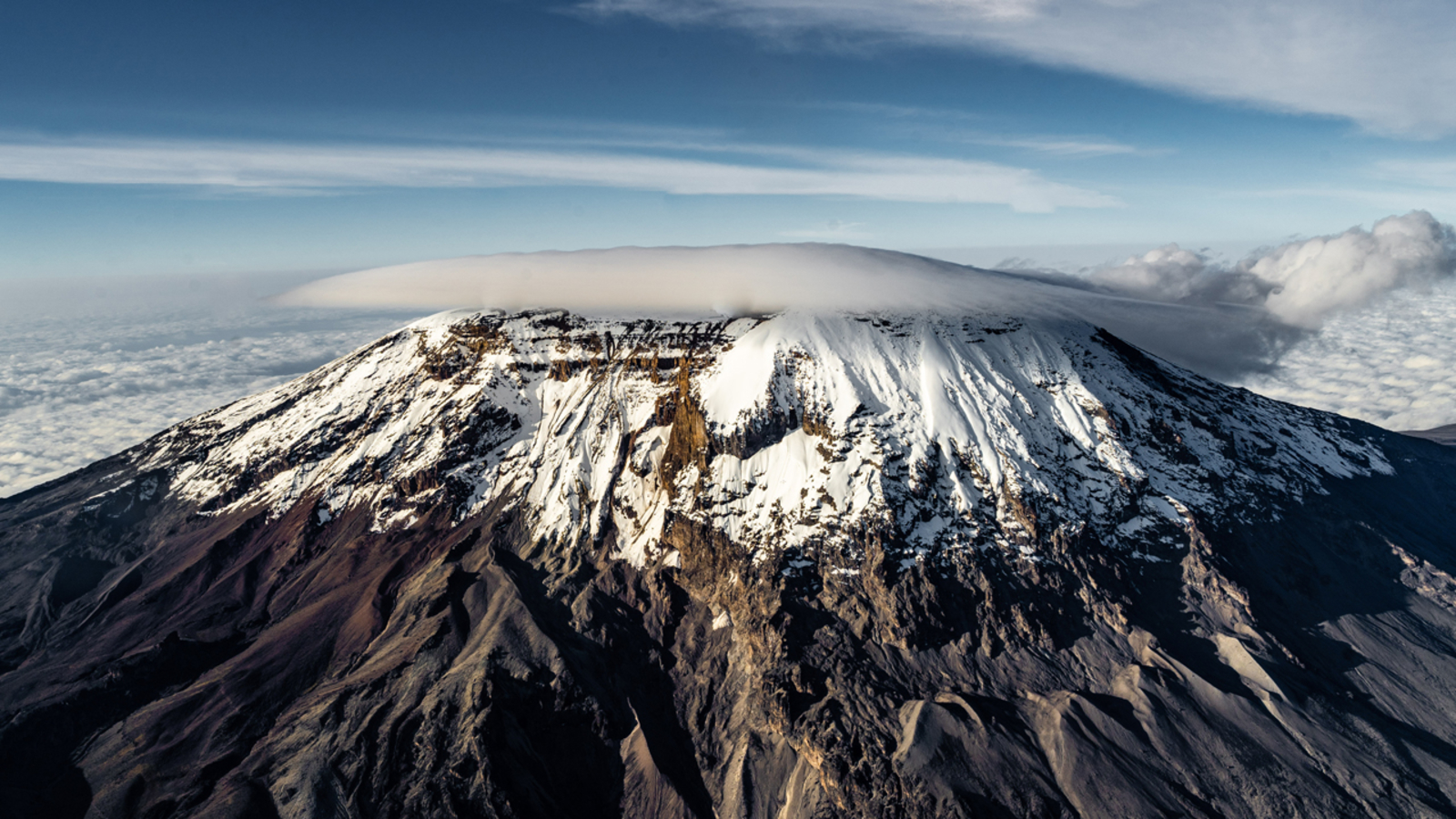
Kilimanjaro is the iconic summit of East Africa and its profile is familiar worldwide as a capped volcanic cone rising from clove and coffee highlands. Routes cross a dramatic sequence of ecosystems that begin in montane forest then move into heath and moorland before reaching alpine desert and finally the icefields beneath the summit. Uhuru Peak crowns the Kibo cone and is the objective that brings trekkers from across the globe. The climb is not technical in the sense of rope work yet it remains a high altitude challenge that demands careful acclimatisation and strong attention to pacing and weather.
Routes vary in length and style offering options that balance solitude with support and scenic variety with summit success rates. The cultural and natural significance of Kilimanjaro is immense and the mountain supports research into glacial retreat and ecological change, making a climb an encounter with both personal challenge and global story. For many visitors sunrise over the African plain from the summit becomes the defining memory of an East Africa mountain journey.

